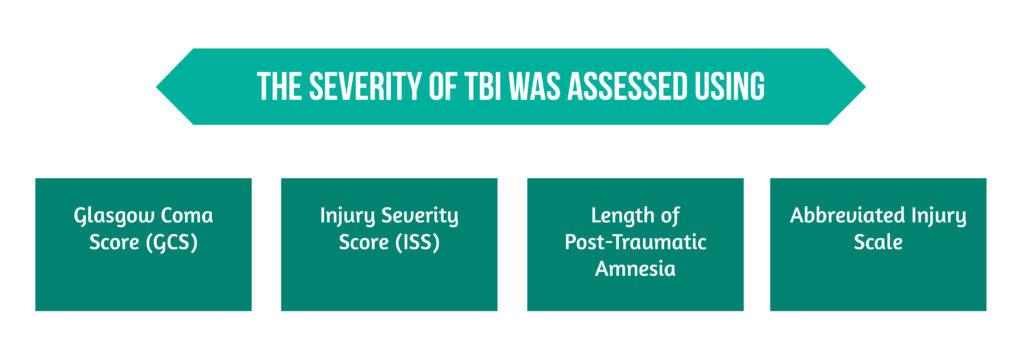Keywords: epidemiology, TBI, Europe, mortality
INTRODUCTION – TBI: The “silent epidemic”
TBI (Traumatic Brain Injury) represents a global burden affecting individuals independently of age and leading to significant disability and mortality. Therefore, a picture of TBI epidemiology in Europe over time is a very interesting topic. Furthermore, the consequences of TBI are being mirrored in the directly affected individuals and their families, in aspects of social and economic levels, with significant direct and indirect costs [1–3]. Therefore, TBI is encountered globally, independently of the economic status of the countries as defined by the World Bank. It is prevalent in countries with limited resources, such as low-income countries (LIC) and low and middle-income countries (LMIC).
One essential and unfortunate aspect is highlighted by the term “silent epidemic”. The term was used to characterize several undermined aspects regarding TBI, on the one hand, the consequences of TBI as they sometimes lack visibility short-term and, on the other hand, the misjudgment of the incidence rate and unfamiliarity of the society regarding the repercussions and TBI-aftermath overall [1].
TBI Epidemiological Research
Epidemiological research is essential to improve TBI:
- medical care
- treatment
- prevention
- informed health care policies
However, it can frequently be negatively influenced by the lack of clear definitions for TBI and its related aspects. The epidemiology of TBI in Europe is continuously changing, with the age of TBI patients being on the rise. Conversely, it falls, taking the lead as the primary cause [1,2]. It is worth mentioning that these statements are based on comparisons made between several studies, even though data based on longitudinal studies would have higher value regarding evidence [2].
For the TBI patient, proper management is crucial, beginning with pre-hospital care, type of transportation, access to specialized centers, acute care, and access to rehabilitation. All these are essential for a good outcome for the patient. Any disruption in any of these patient pathway elements affects the outcome [3]. Find more about Traumatic Brain Injury Registries.
A short timeline of TBI epidemiology in Europe

TBI between 1980-2003…
A systematic review by Tagliaferri et al. covered the published papers regarding the epidemiology of TBI in Europe for the past 20 years [3]. The 23 studies included in the analysis showed a hospital admission rate and mean mortality rate of 235, respectively 15 cases per 100,000 people per year. The causes of TBI differed geographically, with the leading cause in the north of Europe being falls, mainly secondary to alcohol use, and in the south, road traffic accidents. Additionally, the quality of the published reports was objectively analyzed using predefined research criteria, covering various factors (definitions, level of completeness of TBI cases assessment, etc.). Of the 23 included studies, the majority covered smaller populations of patients (regions, counties, or provinces), while some covered TBI patients on a national level. The variability of the studies regarding the studied population and method of case identification were taken into consideration when the comparative analysis was made. The incidence of TBI, despite the different definitions of the selected cases and the inclusion criteria, concentrated mainly on TBI patients admitted to the hospital, no matter the outcome and mortality as identified by local institutions. Important to mention that the calculation of TBI incidence was done differently in the selected studies. Some of them selected exclusively patients that were admitted to the hospital. At the same time, others also included the ones seen in the emergency department (they were also considered to be “admitted” to the hospital). The incidence range was broad. It included adult TBI patients regardless of severity [3].
The TBI prevalence was also calculated using estimations and assumptions. The mortality rate identified in the studies was given either directly or calculated from the given total number of TBI patients’ deaths and the studied population. However, when considering the differing mortality rates and the fact that in some cases, only patients admitted to the hospital were selected has to be taken into consideration.
The severity of TBI was assessed using the following instruments showcased in Figure 3:

Though similar to the other assessed parameters, the differences in the selection of the study population were of utter importance. In some studies, only patients with a referral to neurosurgery were included, or the emergency department-treated patients were excluded, consequently influencing the results. The causes of TBI were, by frequency, road traffic accidents followed by falls, with one Scotland reporting violence as a common cause. The relation between alcohol and TBI, the general outcomes measured with the Glasgow Outcome Scale, disability outcomes, length of hospital stay, and the cost of treatment were also calculated. The results had either significant differences regarding study methodology leading to the impossibility of comparison or limited available data (the data being available only in some of the included studies) or differing ranges for the results. The differences significantly influence the comparison of several reports using study definitions and protocols [3].
Furthermore, although most deaths occurring secondary to trauma are because of TBI, this field of research is still receiving “less funding than any other cause of human misery” [3, 4].
TBI between 2003-2012… in Belgium
A longitudinal epidemiological study by Peeters W. et al. published in 2017 analyzed, in a retrospective manner, the patterns of TBI from hospital-based databases from Belgium covering the period between 2003-2012. Their research showed overall a decrease of around 3,5% in hospital admissions of TBI patients per year and a decrease in TBI incidence in younger people instead of the increase in elderly patients. Interestingly, the mortality rate was constant at about 6.5 per 100,000 people over the years. Worth mentioning is that falls represented the leading cause of TBI, with the highest incidence in elderly patients. Furthermore, concluding this 10-year research, the changing pattern of TBI epidemiology was shown. The need for emphasis on prevention strategies was underlined, especially regarding falls in the elderly population and the need for suitable infrastructure. The proposed prevention strategies covered several aspects of falls, from patients’ medication (including psychotropics) that comprise a risk for falls to periodic evaluation of vision, the ability to walk and balance, and the environment at home, as well as alcohol use and depression [2].
Last but not least, significant for the results of this study is the probable underestimation of the incidence of TBI, secondary to the lack of inclusion of patients with mild TBI that was discharged at home or that did not get medical attention. Furthermore, the mortality rate of TBI patients after discharge from previous studies was up to 20%. Another weakness of the study was the possibility of multiple hospital admissions of the same patient while unable to assess the evolution of injury severity [2].
TBI between 1990-2014…
Considering the impact on public health, the economy, and society as a whole of TBI, Peeters W. et al. published a systematic review and meta-analysis on the epidemiology of TBI in Europe, concentrating on the methods used for the different studies and the analysis of incidence rates mirroring the current situation on this subject. Publications written in the English language between 1990-2014 from 16 countries were included in the final analysis. Despite the significant variability regarding the definition of TBI cases (inclusion criteria) and their identification, 28 studies were included in the review. Studies were included if they were original, English written, with full text available, focusing on the epidemiology of all types of TBI severity in the general population with a study length of one year. Furthermore, the study population used for several publications was considered only once, taken from the most recent publication. The majority of the reports were based on regions, counties, or provinces from different countries, with under a third of the studies covering TBI on a national level. Furthermore, most of the studies gathered the data for one year. The included patients ranged from 247 to 280,000, with a total population between about 84 thousand to 82 million [1].
The most frequent causes of TBI were on the first level falls, followed by road traffic accidents. Furthermore, supporting these findings, the highest incidence of TBI was identified in older adults. Additionally, the methodology used for the studies and incidence were studied. The STROBE (Strengthening the Reporting of Observational Studies in Epidemiology) criteria were assessed, with 19 out of 28 studies completely respecting the criteria. Variations were identified in various parts of the studies, ranging from the inclusion criteria, case definitions, method of calculating the incidence, study population, and case ascertainment. All these lead to difficulty in the making of the comparative analysis. In all studies, male domination was identified [1].
Regarding the mechanisms of the injuries, the shift from road traffic accidents to falls was shown. Furthermore, road traffic accidents remain the most frequent cause of severe TBI. Scandinavian countries reported mainly falls as the cause of TBI, while the other countries also reported road traffic accidents. Last but not least, the correlation between the mechanism of TBI and the age of the affected patients was shown, with the elderly suffering from TBI mainly due to falls [1].
Prospect for future epidemiologic studies onTBI epidemiology in Europe
As seen above, numerous epidemiologic studies have been conducted regarding TBI in Europe. Unfortunately, the lack of heterogeneity in the studies continues to influence the comparative analysis of the existing studies significantly. Defining a methodology of epidemiologic studies regarding TBI could lead to more exact data. The first step was the development of common data elements, but further standardization of case definitions and methods of identification and study development have to be made. Nevertheless, the importance of these studies and the obtained data will prove to be of utter significance for prevention campaigns and the healthcare system in general [1–3].
References
- Peeters W, van den Brande R, Polinder S, et al. Epidemiology of traumatic brain injury in Europe. Acta Neurochir (Wien). 2015;157(10):1683-1696. doi:10.1007/s00701-015-2512-7
- Peeters W, Majdan M, Brazinova A, Nieboer D, Maas AIR. Changing Epidemiological Patterns in Traumatic Brain Injury: A Longitudinal Hospital-Based Study in Belgium. Neuroepidemiology 2017;48:63-70. doi: 10.1159/000471877
- Tagliaferri F, Compagnone C, Korsic M, Servadei F, Kraus J. A systematic review of brain injury epidemiology in Europe. Acta Neurochir (Wien). 2006;148(3):255-268. doi:10.1007/s00701-005-0651-y
- Roberts I. Will we continue to ignore death and injuries from road traffic crashes? (Letter) Brit Med J 2001. 323: 402. Available at: https://www.ncbi.nlm.nih.gov/pmc/articles/PMC1120998/




